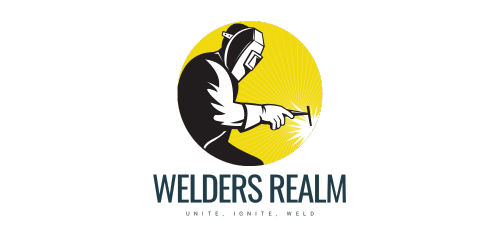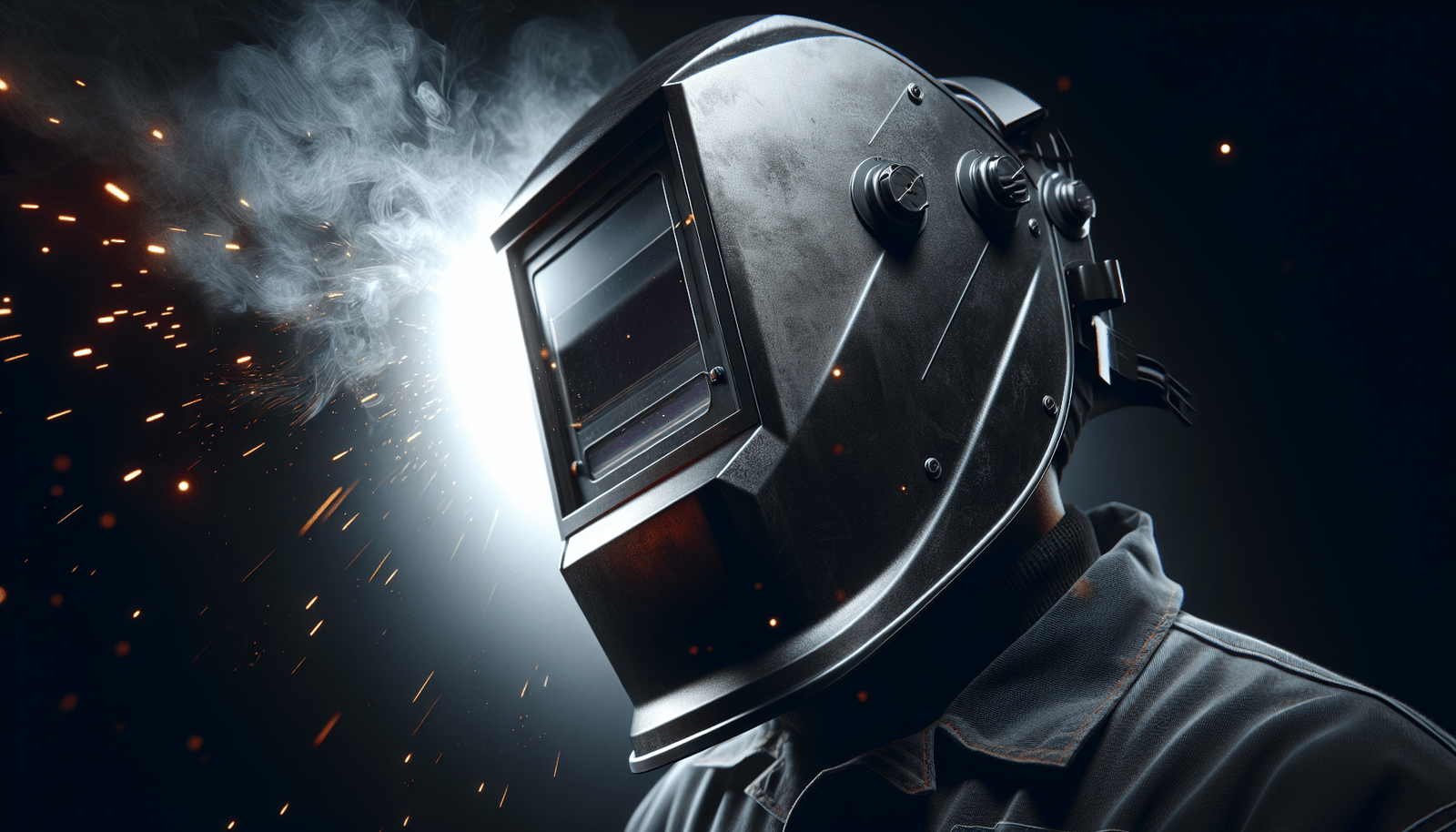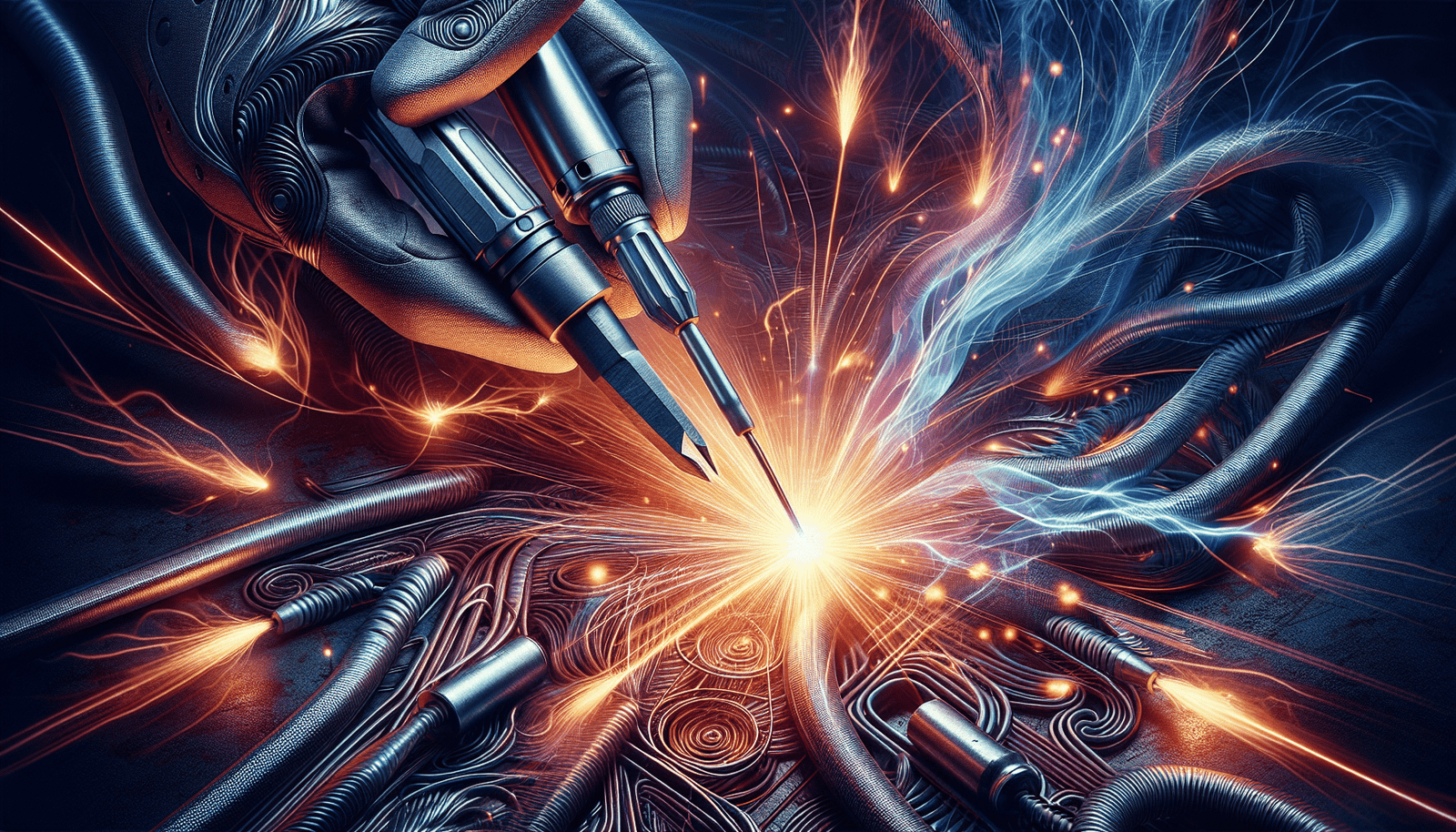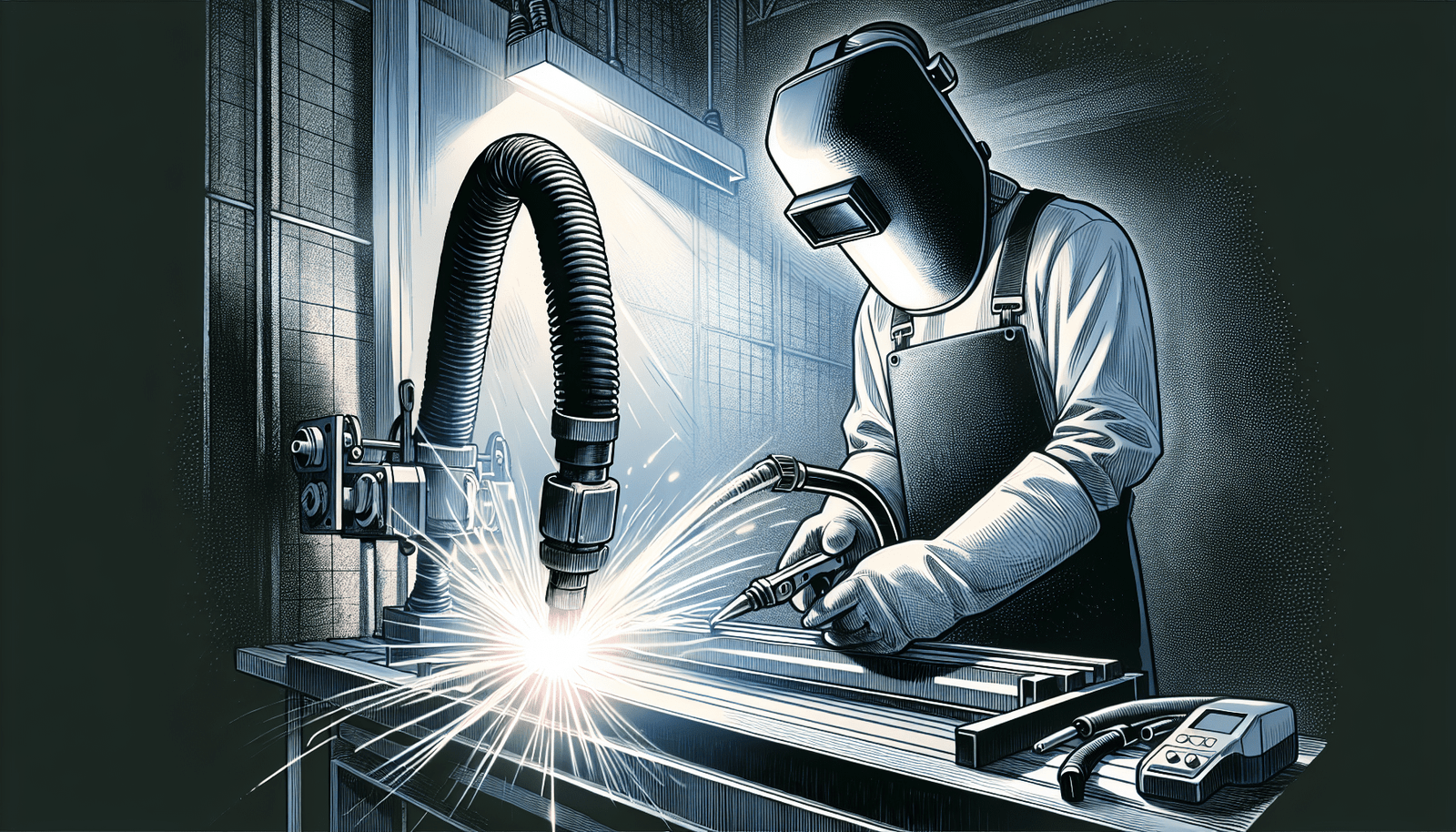Are you a welding guru or someone on the hunt for welding product reviews? Look no further! In this article, we have gathered a collection of frequently asked questions in the field of machinery construction. Whether you’re curious about the best welding techniques or searching for tips on purchasing the right equipment, we’ve got you covered. Our goal is to provide you with a friendly and approachable guide that is easy to understand, free of jargon, and full of valuable insights. So, sit back, relax, and get ready to expand your knowledge in the world of welding. And don’t forget, at the end of the article, we’ll even give you a little nudge to shop online for all your welding needs.
Understanding Different Types of Welding Machines
When it comes to welding, having the right machine is essential. There are various types of welding machines available, each with its own unique capabilities and applications. Let’s explore some of the most commonly used welding machines and understand their functions:
Shielded Metal Arc Welding (SMAW)
Also known as stick welding, SMAW is one of the oldest and most versatile welding processes. It uses a consumable electrode coated with flux to create an electric arc that melts the metal being welded. SMAW welding machines are perfect for outdoor welding jobs and can handle thick metal sections with ease.
Gas Metal Arc Welding (GMAW)
Commonly referred to as MIG (Metal Inert Gas) welding, GMAW uses a continuous consumable wire electrode and a shielding gas to protect the weld pool from atmospheric contamination. MIG welding machines are widely used in automotive and manufacturing industries due to their ability to produce clean and efficient welds.
Flux-Cored Arc Welding (FCAW)
Similar to MIG welding, FCAW employs a continuous consumable electrode. However, instead of shielding gas, it uses a flux-filled wire that provides its own shielding. FCAW welding machines are ideal for outdoor applications and can handle dirty or rusty metal surfaces.
Gas Tungsten Arc Welding (GTAW)
Also known as TIG (Tungsten Inert Gas) welding, GTAW is highly precise and produces high-quality welds. It uses a non-consumable tungsten electrode and a filler metal rod, with a shielding gas protecting the weld pool. TIG welding machines are commonly used in the aerospace, automotive, and fabrication industries.
Plasma Arc Welding (PAW)
PAW is an advanced welding process that utilizes a highly focused plasma arc to join metal. It offers exceptional control and produces clean and precise welds. PAW welding machines are commonly employed in industries such as aerospace, electronics, and medical.
Submerged Arc Welding (SAW)
SAW is a welding process that involves the formation of an arc between a continuously fed wire electrode and the workpiece. The arc is shielded by a granular flux, which also acts as a slag layer to protect the weld pool. SAW welding machines are typically used for heavy-duty applications, such as welding thick steel plates in shipbuilding and pipeline construction.
Now that we have a basic understanding of the different types of welding machines, let’s compare their functions and applications:
- SMAW machines are versatile and can be used for construction, repairs, and maintenance tasks.
- GMAW machines are excellent for welding thin to medium-thick materials, making them popular in the automotive and manufacturing industries.
- FCAW machines are suitable for outdoor welding projects and can handle dirty or rusty surfaces.
- GTAW machines produce high-quality welds and are used in industries that require precision and aesthetic appeal.
- PAW machines offer exceptional control and are commonly utilized in industries that require high-quality and precise welds.
- SAW machines excel in heavy-duty applications, such as shipbuilding and pipeline construction, due to their ability to handle thick metal sections.
Understanding the different types of welding machines and their applications is crucial for selecting the right machine for your specific needs. Now, let’s address some frequently asked questions related to welding machines.
Frequently Asked Questions about Welding Machines
Performance-related questions
Q: How do I know which welding machine is suitable for my project? A: Consider factors such as the type of metal you are welding, the thickness of the material, and the desired weld quality. Researching and consulting experts can help you make an informed decision.
Q: Can I use a welding machine for different types of metals? A: It depends on the welding process and the machine’s capabilities. Certain welding machines, such as MIG and TIG, can weld various metals, while others may be more limited in their compatibility.
Q: What factors affect the speed and efficiency of a welding machine? A: Factors such as power input, duty cycle, welding process, electrode type, and operator skill can impact the speed and efficiency of a welding machine.
Maintenance queries
Q: How often should I perform maintenance on my welding machine? A: Regular maintenance is crucial for optimal performance. It is recommended to follow the manufacturer’s guidelines and perform routine inspections and servicing as required.
Q: What are some common maintenance tasks for welding machines? A: Tasks may include cleaning the machine, checking connections and cables, inspecting and replacing consumables, and ensuring proper cooling and ventilation.
Q: Can I perform maintenance on my welding machine myself, or should I hire a professional? A: Basic maintenance tasks can often be performed by the user, but more complex repairs and servicing may require the expertise of a professional technician.
Operational issues
Q: Why does my welding machine produce a weak or inconsistent arc? A: Weak or inconsistent arcs can be caused by various factors, including incorrect voltage settings, worn-out or contaminated consumables, faulty connections, or improper grounding.
Q: How can I prevent my welding machine from overheating? A: To avoid overheating, ensure proper cooling and ventilation, avoid exceeding the machine’s duty cycle, and refrain from blocking the air vents.
Q: What are some common safety precautions to take when operating a welding machine? A: Wear appropriate personal protective equipment (PPE), ensure proper grounding, work in a well-ventilated area, and follow all safety guidelines provided by the manufacturer.
Now that we’ve addressed some of the commonly asked questions, let’s move on to the importance of safety measures when using welding machines.
Safety Measures in Using Welding Machines
Welding machines can pose certain risks if not used properly. It’s crucial to prioritize safety to prevent accidents and ensure the well-being of everyone involved. Here, we’ll discuss some essential safety measures to follow when using welding machines:
Detailing safety equipment
Personal Protective Equipment (PPE): Always wear appropriate PPE, including a welding helmet, safety glasses, gloves, and protective clothing, to shield yourself from flying sparks, UV radiation, and hot metal.
Ventilation: Work in a well-ventilated area or use local exhaust ventilation to prevent the accumulation of hazardous fumes and gases.
Fire Safety: Keep fire extinguishers nearby and ensure that there are no flammable materials in the vicinity of your welding operation.
Describing potential risks and how to prevent them
Electric Shock: Avoid touching the electrode, workpiece, or any metal surfaces with your bare hands while welding. Make sure your welding machine is properly grounded, and use dry gloves when handling electrodes.
Welding Fumes and Gases: Welding generates hazardous fumes and gases that can be harmful if inhaled. Ensure adequate ventilation or use respiratory protection to prevent exposure.
UV Radiation: Welding produces intense UV radiation that can damage your eyes and skin. Wear a welding helmet with the appropriate shade lens and cover exposed skin to protect yourself.
Routine checks for safety
Inspections: Regularly inspect your welding machine, cables, and connections for any signs of damage, loose connections, or wear and tear. Replace any damaged or worn-out components promptly.
Training and Certification: Ensure that you have received proper training on the safe operation of welding machines. Consider obtaining relevant certifications to demonstrate your knowledge and skills.
Emergency Preparedness: Familiarize yourself with emergency procedures, such as first aid and proper response to fire incidents. Have emergency contact numbers readily available in case of an accident.
By following these safety measures, you can minimize risks and create a safe working environment when using welding machines. Now, let’s move on to selecting the right welding machine for your specific needs.
Selecting the Right Welding Machine for Your Needs
Choosing the right welding machine can greatly impact the quality and efficiency of your welding projects. To make an informed decision, consider the following factors:
Factors to consider when choosing a welding machine
Type of Welding: Determine the welding process that best suits your needs, such as MIG, TIG, or stick welding.
Material Compatibility: Consider the types of metals you will be working with and ensure that the welding machine you choose is compatible with those materials.
Welding Capacity: Evaluate the welding machine’s amperage range and duty cycle to ensure it can handle the desired welding tasks.
Overview of popular welding machines in the market
MIG Welders: These machines are versatile and widely used for automotive, manufacturing, and home projects. They offer fast and efficient welding with excellent control.
TIG Welders: TIG machines are known for producing high-quality welds and are commonly used for precision welding in industries such as aerospace and fabrication.
Stick Welders: Stick welding machines are reliable and easy to use, making them suitable for beginners and outdoor welding tasks.
How to determine the suitability of a welding machine for specific tasks
Consult Experts: Seek advice from professionals or experienced welders who can guide you in selecting the right welding machine for your specific tasks.
Read Reviews: Look for reviews and ratings from reputable sources to gain insights into the performance, reliability, and features of different welding machines.
Consider Future Needs: Anticipate your future welding requirements and choose a machine that can accommodate potential projects.
By considering these factors and acquiring the necessary knowledge, you can confidently select the welding machine that best meets your needs. Now, let’s move on to the proper maintenance and care of welding machines.
Proper Maintenance and Care of Welding Machines
Regular maintenance and care are essential for ensuring the longevity and optimal performance of your welding machine. By following these routine procedures, you can extend the lifespan of your machine and prevent potential issues:
Routine care and maintenance procedures
Cleaning: Regularly clean your welding machine, removing any dust, debris, or accumulated spatter. Pay close attention to cooling fans, vents, and air filters.
Inspections: Check cables, connections, and consumables for any signs of wear, damage, or loose connections. Replace faulty or worn-out components promptly.
Lubrication: Refer to the manufacturer’s guidelines and lubricate moving parts as recommended to prevent friction and ensure smooth operation.
Common maintenance-related issues and resolutions
Wire Feed Problems: If you experience issues with wire feeding in MIG or flux-cored welding, check for wire jams, ensure proper tension adjustment, and inspect the drive rolls for debris.
Electrode Sticking: In stick welding, if the electrode sticks to the workpiece, increase the arc length, clean the electrode, or adjust the amperage to prevent sticking.
Contaminated Gas or Wire: If your welds are producing excessive spatter or impurities, check the shielding gas purity, replace contaminated wire or flux, and clean the workpiece thoroughly.
Tips on extending the lifespan of your welding machine
Follow the Manufacturer’s Guidelines: Always refer to the manufacturer’s instructions for maintenance procedures, operating parameters, and recommended consumables.
Adequate Cooling: Ensure proper cooling and ventilation for your welding machine, as overheating can reduce its lifespan. Avoid blocking air vents and make sure cooling fans are clean and functional.
Proper Storage: When not in use, store your welding machine in a clean and dry environment, protecting it from dust, moisture, and extreme temperatures.
By regularly maintaining your welding machine and addressing any issues promptly, you can ensure its longevity and consistent performance. Now, let’s dive into learning some basic welding techniques.
Learning Basic Welding Techniques
Mastering welding techniques takes practice and dedication, but with a solid foundation in the fundamentals, you can start your welding journey with confidence. Here’s an overview of some basic welding techniques to get you started:
Overview of fundamental welding techniques
Tack Welding: Tack welding involves creating small, temporary welds that hold the workpieces in place before performing the final weld. It ensures proper alignment and reduces distortion.
Butt Joint Welding: Butt joint welding is used to join two pieces of metal that are aligned in the same plane. It involves melting the metal at the joint and adding filler material to create a strong bond.
Fillet Welding: Fillet welding is used to join two metal pieces that are perpendicular or at an angle to each other. It involves creating a triangular-shaped weld in the corner formed by the two pieces.
Instructions and tips for newbie welders
Safety First: Always prioritize safety by wearing the necessary protective equipment, ensuring proper ventilation, and following safety guidelines.
Practice Proper Technique: Invest time in practicing proper hand and body positioning, maintaining a steady hand, and controlling the arc length for optimal weld quality.
Choose the Right Process and Settings: Select the appropriate welding process, adjust the current and voltage settings according to the thickness and type of material, and practice on scrap pieces before working on your project.
Critical techniques for professional welding jobs
Welding in Various Positions: Practice welding in different positions, such as flat, horizontal, vertical, and overhead, as each position presents unique challenges and requires specific techniques.
Welding Thick Materials: When welding thick metal sections, proper preheating, multi-pass welding, and efficient cooling techniques are crucial to achieve strong and durable welds.
Welding Dissimilar Metals: Different metals have different properties, requiring specific techniques and filler materials for successful welding. Research and understand the compatibility of different metals before starting the welding process.
By familiarizing yourself with these basic welding techniques and practicing under proper guidance, you can improve your skills and advance in the world of welding. Now, let’s explore the various parts of a welding machine and their functions.
Describing Welding Machine Parts and Their Functions
Understanding the different parts of a welding machine is essential for troubleshooting issues and performing maintenance. Let’s take a look at some important welding machine parts and their functions:
List of important welding machine parts
Power Source: The power source supplies the necessary electrical power to generate the welding arc.
Welding Circuit: The welding circuit comprises cables, connectors, and switches that carry the electrical current from the power source to the welding electrode.
Electrode Holder: The electrode holder is an insulated handle that secures the welding electrode and allows the welder to control its position and movement.
Ground Clamp: The ground clamp connects the workpiece to the welding machine, providing a path for the electrical current to complete the circuit.
Control Panel: The control panel houses controls, indicators, and settings to adjust welding parameters such as voltage, current, and wire feed speed.
Explain the role of each part
Power Source: The power source converts input power into the suitable output voltage and current required for the welding process.
Welding Circuit: The welding circuit provides a path for the electrical current to flow from the power source to the welding electrode, enabling the generation of the welding arc.
Electrode Holder: The electrode holder securely holds the welding electrode and allows the welder to guide the electrode’s position and movement during the welding process.
Ground Clamp: The ground clamp ensures a proper electrical connection between the workpiece and the welding machine, completing the electrical circuit and enabling the welding process.
Control Panel: The control panel provides access to various controls and settings that allow the welder to adjust parameters such as voltage, current, and wire feed speed to achieve the desired weld quality.
Common problems associated with these parts and their solutions
Power Source Issues: If the power source fails to provide the required voltage or current, check the power input and electrical connections. Consult a professional technician if the issue persists.
Welding Circuit Problems: If the welding circuit is experiencing poor connectivity or fluctuations, inspect the cables and connectors for damage or loose connections and replace any faulty components.
Electrode Holder Malfunctions: If the electrode holder fails to securely grip the electrode, check for worn-out components, such as insulators or springs, and replace as necessary.
Ground Clamp Troubles: If the ground clamp does not establish a proper electrical connection, clean the workpiece surface to ensure good contact and inspect the clamp for any damage or corrosion.
Control Panel Errors: If the control panel settings are not functioning as expected, verify that the inputs are properly adjusted and consult the welding machine’s manual for troubleshooting steps.
By understanding the functions of these welding machine parts and addressing common issues promptly, you can maintain the machine’s performance and prevent major breakdowns. Now, let’s move on to evaluating welding machine performance.
Evaluating Welding Machine Performance
Assessing the performance of a welding machine is crucial for ensuring the quality and efficiency of your welding projects. Let’s explore how you can evaluate the performance of your welding machine:
How to conduct performance assessment
Weld Quality: Evaluate the quality of the welds produced by the machine by inspecting them for proper fusion, lack of defects, and adherence to applicable welding standards and specifications.
Welding Speed: Assess the machine’s ability to achieve the desired welding speed while maintaining proper penetration and fusion. Compare the actual welding times to estimate the machine’s efficiency.
Power Efficiency: Analyze the energy consumption of the machine by monitoring the power input and output, considering the duty cycle, and comparing it with the machine’s specifications.
Common performance issues and how to resolve them
Inconsistent Weld Quality: If your welds exhibit inconsistencies, evaluate factors such as voltage settings, wire feed speed, electrode angle, and cleanliness of the workpiece. Adjust these variables to achieve consistent weld quality.
Insufficient Penetration: If the welds lack sufficient penetration, consider increasing the current, adjusting the electrode angle, or using a different welding technique that offers better penetration.
Excessive Spatter: Excessive spatter can be caused by various factors, including improper wire feed speed, incorrect voltage settings, or inadequate shielding gas. Adjust these variables to reduce spatter.
Understanding factors that can impact welding machine performance
Electrical Supply: The quality and stability of the electrical supply can affect the welding machine’s performance. Ensure that the power supply meets the machine’s requirements and consider using a voltage regulator or stabilizer if necessary.
Consumables: The quality and condition of consumables, such as electrodes, wires, and shielding gas, can impact the performance of the welding machine. Use high-quality consumables and replace them as needed.
Operator Skill: The skill and experience of the operator play a significant role in the performance of a welding machine. Continuous training and practice can improve welding technique and overall performance.
By conducting thorough performance assessments, addressing common issues, and considering all relevant factors, you can optimize the performance of your welding machine and achieve high-quality welds consistently. Now, let’s explore the impact of technological advancements on welding machines.
Impact of Technological Advancements on Welding Machines
Technological advancements have revolutionized the welding industry, introducing innovations that improve the efficiency, quality, and safety of welding processes. Let’s discover some recent advancements and their benefits:
Recent technological innovations in the world of welding
Inverter Technology: Inverter-based welding machines offer improved control, energy efficiency, and portability compared to traditional transformer-based machines. They provide stable arc characteristics and enhanced weld quality.
Pulse Welding: Pulse welding technology allows for precise control over the heat input, reducing the risk of distortion and improving weld quality. It is particularly beneficial for thin and heat-sensitive materials.
Advanced Controls and Automation: Welding machines with advanced controls and automation features enable precise parameter adjustments, simplified operation, and improved productivity. They can also integrate with robotic systems for automated welding processes.
The benefits of these innovations
Enhanced Productivity: Technological advancements have led to faster welding speeds, improved deposition rates, and reduced downtime, resulting in increased productivity and shorter project durations.
Improved Weld Quality: Advanced welding machines offer better control over the welding process, resulting in higher-quality welds with minimal defects, improved aesthetics, and improved mechanical properties.
Energy Efficiency: Innovations such as inverter technology and advanced controls have significantly improved the energy efficiency of welding machines, reducing power consumption and operating costs.
Future predictions for welding technology
Industry 4.0 Integration: Welding machines are likely to embrace Industry 4.0 concepts, integrating with digital platforms, data analytics, and IoT (Internet of Things) technologies for real-time monitoring and optimization of welding processes.
Augmented Reality (AR) and Virtual Reality (VR): AR and VR technologies hold the potential to revolutionize welding training and remote assistance, allowing operators to simulate and practice welding techniques in a virtual environment.
Advanced Welding Materials: As advancements continue in material science, new alloys and composite materials will require innovative welding techniques and machines capable of handling their unique properties.
With the continuous advancement of welding technology, the future holds exciting possibilities for increased efficiency, quality, and safety in the welding industry. Now, let’s explore the various accessories that can enhance the performance of your welding machine.
Understanding Welding Machine Accessories
Welding machine accessories play a vital role in ensuring efficient and effective welding operations. Let’s take a look at some common accessories and their functions:
Enumeration of common accessories
Welding Helmet: A welding helmet provides essential protection for the operator’s face and eyes from UV radiation, sparks, and debris.
Welding Gloves: Welding gloves protect the operator’s hands from heat, sparks, and potential burns. They also provide a firm grip on welding tools and materials.
Welding Jacket or Apron: A welding jacket or apron shields the operator’s body and clothing from sparks, radiation, and hot metal splatter.
Welding Curtain or Screen: A welding curtain or screen creates a confined area around the welding operation, preventing bystanders from being exposed to UV radiation and sparks.
Functions of these accessories
Welding Helmet: A welding helmet features a darkened lens that shields the operator’s eyes from intense UV radiation while allowing a clear view of the welding area. It also protects the face and head from sparks and debris.
Welding Gloves: Welding gloves are made from flame-resistant materials that withstand high heat and provide insulation against electric shock. They allow the operator to handle hot metal, electrodes, and welding equipment safely.
Welding Jacket or Apron: A welding jacket or apron is made from flame-resistant material and protects the operator’s body and clothing from sparks, radiation, and hot metal splatter. It ensures the operator’s safety and minimizes the risk of burns.
Welding Curtain or Screen: A welding curtain or screen consists of a flame-resistant material that acts as a barrier to contain UV radiation, sparks, and debris within the welding area. It prevents bystanders from being exposed to potential hazards.
How to select the right accessories for your welding machine
Consider Safety Standards: Choose accessories that meet relevant safety standards, ensuring they provide adequate protection for the specific welding processes and environments.
Material and Durability: Select accessories made from flame-resistant materials that can withstand the heat and hazards associated with welding. Look for durable construction to ensure their longevity.
Comfort and Fit: Opt for accessories that provide a comfortable fit and allow freedom of movement. Consider adjustable features, such as straps or closures, to achieve a secure and personalized fit.
By using the appropriate welding machine accessories, you can enhance operator safety, protect against potential hazards, and create a more efficient and productive welding environment.
In conclusion, understanding different types of welding machines, addressing frequently asked questions, prioritizing safety measures, selecting the right machine, maintaining proper care, and learning basic techniques are vital aspects of the welding process. By following these guidelines and staying updated on technological advancements, you can optimize your welding operations and achieve excellent results. Remember to always prioritize safety, regularly maintain your welding machine, and continuously improve your skills and knowledge in the world of welding. Happy welding!




